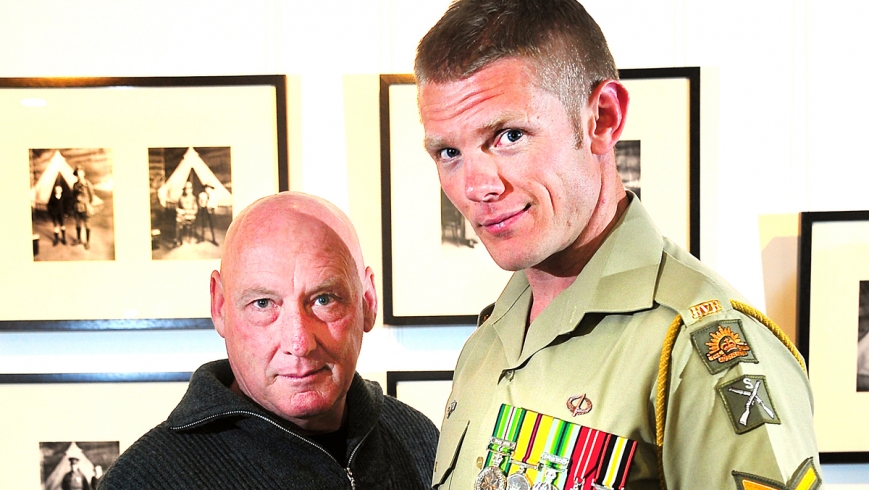Broadmeadows’ integral role in World War I is often overlooked.
One hundred years ago on Tuesday, the first group of young men enlisted to serve in World War I marched from Melbourne to the Maygar Barracks on Camp Road to start their training before heading to the Middle East and Europe.
They were followed by hundreds more, who saw it as an opportunity to serve their country and bring their mates back home while travelling the world.
Their experiences were recorded by photographer Algernon Darge and are on display at the Hume Global Learning Centre, Broadmeadows, until September 15.
One recruit was Albert King, an 18-year-old from Brunswick, who arrived at the barracks in July 1915 and left for Egypt on October 11 the same year before being shipped to Turkey, France and England.
“He considered the war an absolute waste of human life,” said his grandson, Ross Abberfield, who visited the exhibition with his son, Cameron, who has followed in his great grandfather’s footsteps by joining the army.
“The British generals . . . ordered the Australians into situations [that] didn’t seem logical and most of them were massacred.’’
Conditions at Maygar Barracks weren’t ideal either; drains were clogged, grounds were a sodden mess and tents leaked.
Mr King spent four months at the camp before moving into situations he would not speak about on his return.
“He lost a lot of his friends – no detail of how, when or why,” Mr Abberfield said.
“Most of the soldiers who came back were damaged. In [Albert’s case], it was a marriage buster and that was quite common.”







